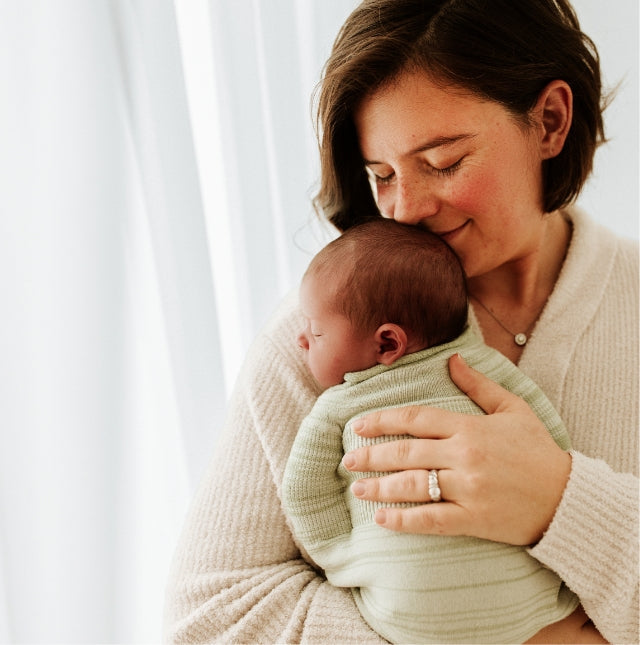Best Swaddles of 2026
Best Swaddles of 2026: Expert Comparison of the Top 7 Baby Swaddles for Safe Sleep
Updated quarterly for accuracy and safety standards
Choosing the right swaddle can transform newborn sleep. This unbiased guide compares the best baby swaddles of 2026 for safety, comfort, and ease of use, drawing on guidance from the American Academy of Pediatrics (AAP) and neonatal insights.
How We Chose the Best Swaddles
- Safety compliance with AAP guidance (snug at chest/arms, loose at hips).
- Comfort & breathability for different climates.
- Ease of use for quick, quiet nighttime changes.
- Longevity & value across growth stages.
- Founders’ expertise—many products were created by parents or clinicians solving real sleep problems.
Quick Comparison Table: Top 7 Swaddles of 2026
| Rank | Swaddle | Price | Best For | Key Strength |
|---|---|---|---|---|
| 1 | Swaddelini | $39.95 | Overall comfort, movement & longevity | Soft 3D-knit allows natural, safe mobility |
| 2 | Butterfly Swaddle | $59 | Transitioning to arms-out | Built-in transition system; quiet fasteners |
| 3 | Ollie Swaddle | $59 | Newborns who need extra containment | Secure wrap with hip-safe spacing |
| 4 | Halo SleepSack | $34.99 | Budget & hospital-trusted option | Affordable, widely available |
| 5 | Love to Dream | $37.95 | Babies who prefer hands-up | Easy zip; encourages self-soothing |
| 6 | SwaddleMe Original | $14.99 | Short-term, newborn stage | Very affordable containment |
| 7 | Jacadi Sleep Sack | $165 | Cold-weather & luxury feel | Thick fabric; premium finish |
Top 7 Best Swaddles of 2026: Detailed Reviews
1) Swaddelini

Origin: Invented by Liz Hilton, a 3D-knit designer and mother, who prototyped the first Swaddelini during postpartum nights to gently hug—rather than restrain—newborns.
- 3D-knit fabric hugs the chest while allowing natural movement.
- Slip-on design (no Velcro, zippers, or wrapping).
- Easy-access diaper flap keeps changes calm and quick.
- Arms-out option supports the rolling stage.
Consider: Higher price due to U.S. manufacturing; size up once baby rolls.


Verdict: Best overall balance of safety, comfort, and longevity for most families.
2) Butterfly Swaddle

Origin: Created by a labor & delivery nurse to simplify the transition from arms-in to arms-out.
- Quiet fasteners to avoid waking baby.
- Built-in pathway for arms-out transition.
- Restricts arms while protecting hip motion.
Consider: Premium price compared with similar overseas-made wraps.
Verdict: Excellent all-in-one choice for families focused on smooth transition.
3) The Ollie Swaddle

Origin: Designed by a foster mother seeking steady, secure containment for fragile newborns.
- Among the most containing wraps for the first weeks.
- Knit material helps maintain hip-safe spacing.
Consider: Costly for short use; may feel too restrictive for some babies.
Verdict: Great for parents who want maximum containment in the newborn stage.
4) Halo SleepSack

Origin: Founded by Bill Schmid and widely used in hospitals to promote safe-sleep practices.
- Affordable and easy to find.
- Trusted by medical communities for safe sleep education.
Consider: Velcro can be loud; some babies learn to wiggle out.
Verdict: Reliable, budget-friendly option with strong hospital pedigree.
5) Love to Dream

Origin: Created by an Australian mother to let babies self-soothe with hands near the face.
- Hands-up design supports self-soothing.
- Simple zip for quick on/off.
Consider: Trickier diaper changes; usually requires multiple sizes.
Verdict: Ideal for babies who prefer hands near the face.
6) SwaddleMe Original

Origin: A long-time budget staple known for simple wrapping.
- Very affordable; good first-weeks option.
Consider: Loud Velcro; limited to newborn stage.
Verdict: Best for tight budgets and short-term use.
7) Jacadi Sleep Sack

Origin: French-designed sleep sack emphasizing warmth and style.
- Thicker fabric suitable for colder rooms.
Consider: High price; fewer functional innovations.
Verdict: A luxury pick for cold climates and premium aesthetics.
Swaddling Safety: Expert Essentials

Allyson Ward, Neonatal Nurse Practitioner
Key AAP-aligned reminders for safe swaddling practice
- Place babies on their backs for every sleep.
- Stop arms-in swaddling at first signs of rolling (often 8-12 weeks).
- Keep fabric below the shoulders and away from the face.
- Room temperature around 72°F (22°C) or cooler.
- Ensure the swaddle is loose at the hips to protect healthy development.
Infant Temperature: TOG & Overheating
Even a light blanket can trap heat if wrapped multiple times. Choose breathable materials and an appropriate TOG for your room temperature.

Common Questions About Swaddling
Is swaddling safe for newborns?
Yes—when the swaddle is snug around the chest/arms, loose at the hips, and baby sleeps on their back.
When should I stop swaddling?
When baby shows signs of rolling or by around 8-12 weeks, whichever comes first. Transition to an arms-out sleep sack.
Does swaddling help babies sleep longer?
Many babies experience calmer sleep and fewer startle awakenings with an appropriately fitted swaddle.
What fabric is best?
Breathable options such as cotton, bamboo, or engineered knits help reduce overheating risk.
Does swaddling increase SIDS risk?
When done correctly and discontinued at rolling, swaddling supports back-sleeping—one of the most important practices in reducing SIDS risk.
Final Thoughts: Choosing the Right Swaddle
All seven choices here meet core safety principles and serve different baby preferences. For a balanced blend of comfort, movement, and longevity, Swaddelini is a standout—yet the “best” choice is ultimately the one that fits your baby’s sleep style and stage.

Stay Snug with Swaddelini: Join Our Family for Updates!
- Choosing a selection results in a full page refresh.
- Opens in a new window.


